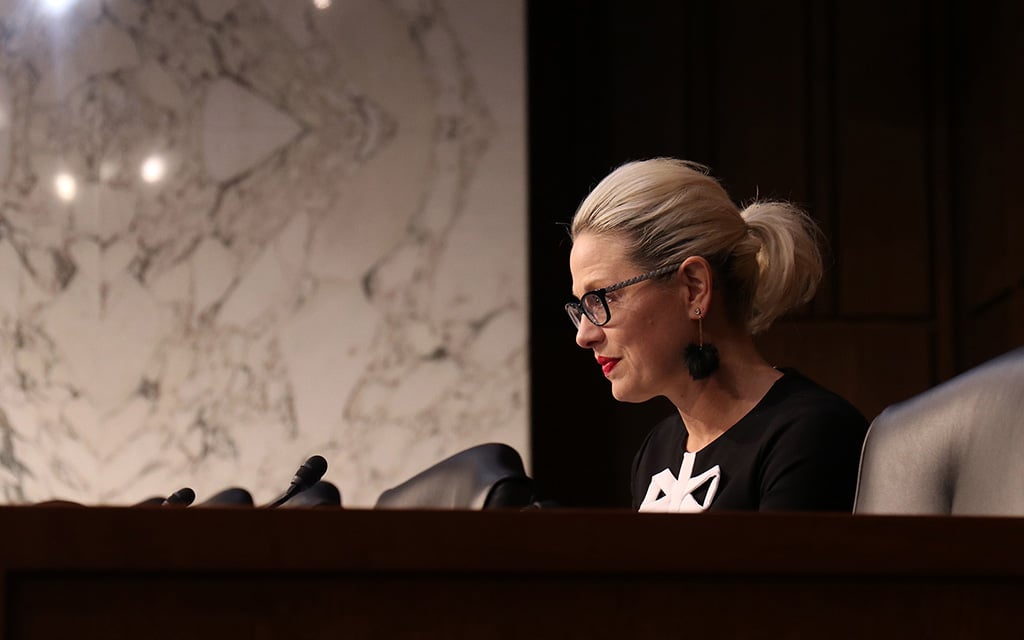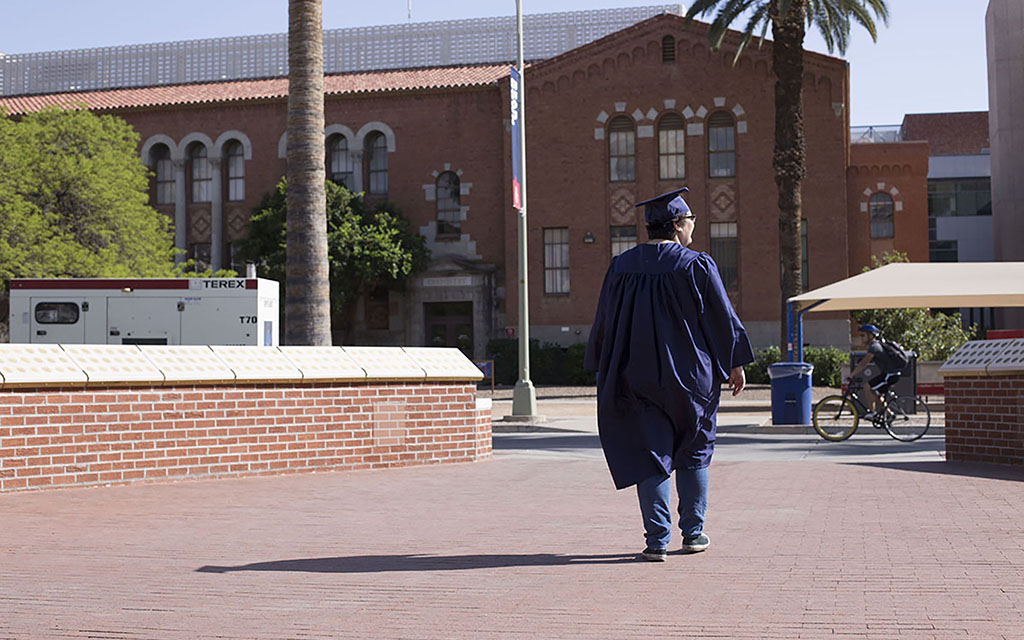
Sen. Kyrsten Sinema, I-Arizona, said she voted to stop the administration’s student debt-relief plan because it penalizes students who pay off loans, but the White House says the plan benefits the middle class. More than 300,000 people in Arizona had applied for relief under the plan before it was put on hold by legal challenges. (File photo by Keerthi Vedantam/Cronkite News)
WASHINGTON – Arizona Sen. Kyrsten Sinema joined two Democrats and all Senate Republicans Thursday to narrowly approve a bill overturning a federal program that would provide student debt relief to 16 million people, including more than 300,000 in Arizona.
The vote is largely symbolic – President Joe Biden has vowed to veto the bill to protect one of his campaign promises and the Supreme Court is expected to rule this month on a challenge to the debt-forgiveness plan.
Biden has said the plan benefits the middle class, since 90% of relief would go to people earning less than $75,000 a year. But Sinema joined other critics who said it penalizes those who were responsible with their debt and paid off their loans.
“The President’s student loan forgiveness plan – fueled by politics and not reality – is unfair to hardworking Arizonans who have responsibly paid their student loans, creates false expectations, and undermines Arizona students’ economic certainty,” Sinema said in an emailed statement before the vote.
The bill passed 52-46, with Sinema, an independent, and Democratic Sens. Joe Manchin of West Virginia and Jon Tester of Montana joining all 49 Republican senators in support. Sen. Mark Kelly, D-Ariz., joined the remaining Democrats opposing the bill.
The measure passed the House last week 218-203, with just two Democratic votes. Arizona House members split on party lines on the vote.
Neither margin would be enough to override a presidential veto.
The program, announced by the Department of Education in August, would provide limited federal student debt relief for borrowers with an annual income below $125,000. Pell Grant recipients in that income category are eligible for up to $20,000 of debt forgiven while those who did not receive Pell Grants could get up to $10,000 in relief.
The forgiveness applies only to federal, not private or other, loans. Reversing the student-debt relief program would reduce direct federal spending by $319.6 billion in 2023, according to a Congressional Budget Office estimate.
The Department of Education said 26 million people applied for debt relief under the program, and 16 million were fully approved.
In Arizona, more than 900,000 people owe a combined $32.4 billion in federal student loans, the department said. Nearly 500,000 of them applied for debt relief and 300,000 were approved before the program was put on hold by legal challenges last fall.
In addition to stopping the debt-forgiveness program, the bill that won final Senate approval Thursday would also end an administration pandemic-era policy that froze payments and interest on federal student loans.
Sinema’s decision to cross the aisle and support the bill reversing student debt-relief was disappointing but not surprising, said Kyle Nitschke, organizing director of the Arizona Students’ Association.
“The student debt payment pause has been a huge relief for students and for graduates of the last two years. And especially with the huge increase in the cost of housing and food that we’ve seen,” Nitschke said. “It’d be irresponsible to put these payments back. It’d be an undue burden on folks.”
Rep. Raul Grijalva, D-Tucson, last week blasted the Republican-backed bill, saying it would “repeal the student loan payment pause that has helped federal student loan borrowers during the pandemic, and force them to unexpectedly confront months of accumulated payments and interest.”
The bill is not the only challenge to the debt-relief program.
Restrictions on the student-debt programs are also included in the Fiscal Responsibility Act that passed the House on Wednesday and was expected to be considered by the Senate late Thursday. That bill aims to avoid a government default by lifting the nation’s $31 trillion debt limit so that the Treasury can borrow money to pay its bills.
As part of the negotiations with the White House on the debt-ceiling bill, House Republicans demanded some budget cuts and several policy changes, including an end to the freeze on student loans payments on Aug. 29.
And the Supreme Court in February heard a challenge by six states, led by Nebraska, who sought to block the program, saying it exceeded federal authority and was no longer needed since the pandemic had passed. The high court case, Biden v. Nebraska, concerns whether the states even have standing to challenge the plan.


